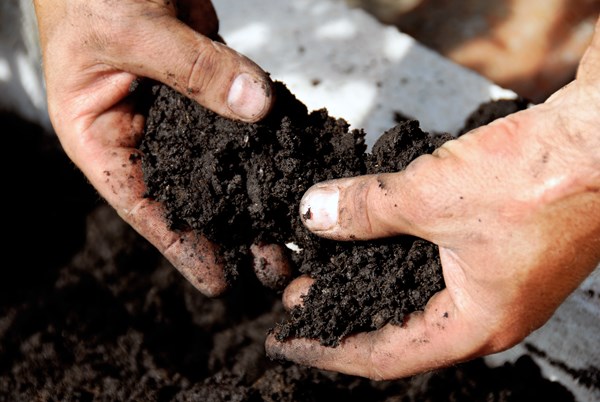Below is a statement issued by four Canadian professors and water experts in response to a letter to the Hamilton Spectator regarding “the danger of biosolids.” The response comes from Drs. Paul Sibley from the University of Guelph, Linda McCarthy from Ryerson University, Chris Metcalfe from Trent University, Jorge Loyo from Rice University in Houston, Texas, USA.
In today’s society, readers of newspapers should expect rational and balanced perspectives on complex environmental issues that confront Canadians. It was with considerable dismay, therefore, that we read the recent article entitled, “Scientist’s Open Letter on the Dangers of Biosolids” by Dr. Sierra Rayne, John Werring, Dr. Richard Honour, and Dr. Steven R. Vincent (Rayne et al.) on the issue of biosolids management. We feel that the authors of the article have misrepresented many aspects about the management of biosolids and in particular have unfairly demonized the practice of applying biosolids onto agricultural lands. As scientists with significant experience researching the environmental impact of biosolids, we wish to respond with a more balanced perspective on the issue of managing biosolids in Canadian society; a perspective based on evidence.
First of all, it is important for all of us to admit that “we” are the cause of the problem in managing biosolids. Each of us produces about half a kilogram of excrement a day, or about 6 billion kilograms per year produced over the entire Canadian population, and so our municipal wastewater treatment plants must find a way to treat and dispose of all of this material. According to the Rayne et al. article, all human waste should be immediately land-filled in lined units until a better solution is found; but, very significantly, they offer no solutions. From a practical and economic perspective, land-filling would incur incredible financial and administrative burden on municipal governments who would be faced with the costs of constructing such exacting holding facilities, not to mention having to find locations for the landfills and dealing with the concerns of people who live near the proposed landfill sites. Lined landfills are costly repositories that should be reserved for our most difficult-to-manage wastes.
Biosolids are not the “toxic stew” that Rayne et al. attempt to portray. The “sludge” that collects in wastewater treatment plants is treated through sophisticated, engineered processes such as anaerobic digestion, composting, or alkaline stabilization before it becomes the biosolids end-product. Sludge treatment reduces odour and levels of pathogens, as well as enhancing degradation of many organic chemicals. When biosolids are applied carefully and judiciously to agricultural soils, this material adds nutrients to the soils that benefit crop production and reduce the need for chemical fertilizers. In most jurisdictions across Canada, applying biosolids to agricultural fields is strictly regulated. In Ontario, the maximum application rate is 22 tonnes/hectare every 5 years, with regulated waiting periods for both harvest and animal grazing to provide additional time for pathogen die-off and degradation of organic chemicals. The Canadian Council of Ministers of the Environment endorses land application as a sustainable and responsible method of managing biosolids, as do most provinces and territories that regulate biosolids.
By focusing exclusively on the occurrence of chemicals in biosolids, Rayne et al. have stoked fears among the public about exposure to toxic chemicals. They have equated chemical presence, at any level, with unacceptable risk. This correlation is truly unscientific, and frankly, irresponsible. As any thinking individual knows well, any chemical can be harmful to humans if exposure is high enough; two acetaminophen tablets can cure your headache but too many taken at once may harm or kill you. The authors claim that humans and the environment are at risk from chemical exposure without taking into consideration the levels of the chemicals in biosolids and in the amended soils. To take their example of polybrominated diphenyl ethers – the quantities of these flame retardants in biosolids are but a trace of what is found in upholstery and carpets in our homes and vehicles. As in any exposure scenario, the mere presence of a chemical is not the end of the story and most certainly should not be the basis for decision-making in society.
In our opinion, the publication of this article that so willfully neglects the merits and benefits of biosolids in agriculture, forestry, reclamation, and urban beautification, and predicts significant human health risks, is not only devoid of a strong basis in evidence, but detracts from more important dialogues on environmental challenges currently faced by society, such as climate change. The weight-of-evidence, when examined fairly and from an unbiased perspective, does not support a moratorium on the land application of biosolids. It would simply be wasteful to disregard the benefits that can result from responsibly and safely recycling this important resource.
A crucial part of choosing an appropriate waste management approach for a community is transparency and community involvement in the selection process. The lack of these elements has been rightfully cited as an important cause for public distrust. Therefore, any waste management approach needs to incorporate an appropriate risk communication process and acknowledge that a practice cannot be considered sustainable without public acceptance.
As scientists, we encourage a civil and informed discussion on biosolids management; one that incorporates fact and weight-of-evidence in an honest national discourse rather than the use of inappropriate catch phrases and misleading information to instill undue fear in a trusting public.
Sincerely,
P.K. Sibley, PhD, Professor, University of Guelph
L.H. McCarthy, PhD, Professor, Ryerson University
C.D. Metcalfe, PhD, Professor Trent University
J.E. Loyo, PhD, Lecturer, Rice University










How about just incinerating …biosolids (sludge= sewer waste ) til it is nothing but ashes
Hello Regina,
There are some wastewater management systems that incinerate biosolids. Reusing biosolids is a much more effective management system, because there is useful energy contained therein, whether for biogas generation or fertilizer. Reusing biosolids is a process that can help communities achieve their climate goals.
Best,
WC team